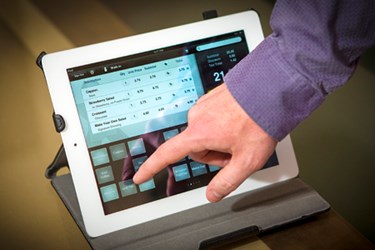Retail IT News For VARs — October 9, 2013

By Anna Rose Welch, Editorial & Community Director, Advancing RNA

In this week’s news, retail leads in digital advertising spending, mobile apps can help retailers prevent comparison shopping, and this year’s holiday spending projected to match spending in 2012.
Retail Industry Still Leads In Digital Advertising Spending
“The U.S. Retail Industry 2013: Digital Ad Spending Forecast and Key Trends Report” released by eMarketer reveals that retail remains the top spender in U.S. digital advertising. The U.S. retail industry’s digital advertising spending will reach $9.42 billion in 2013, and is expected to reach $13.5 billion by 2017. Direct response campaigns will account for 64.6 percent of retailers (online, multichannel, catalog retailers, and restaurants) digital advertising budgets. The remaining 35.4 percent will be used on brand-focused campaigns, which, according to eMarketer, is rapidly evolving but more popular at certain times of year. However, the retail industry’s share of U.S. advertising spending is expected to decrease from 22.3 percent in 2013 to 22.2 percent in 2017.
Mobile App Can Help Prevent Comparison Shopping
A global study from the UPS Pulse of the Online Shopper series reveals that a mobile app is a helpful tool for retailers searching for methods to prevent comparison shopping. The study also shows that 83 percent of U.S. online shoppers are satisfied with online shopping experiences. Like Canadian consumers, U.S. consumers are willing to trade speed for cost. The area with the least consumer satisfaction across the globe is delivery and returns.
Holiday Sales Projected To Match 2012's
According to consulting firm Deloitte LLC, holiday sales are projected to reach between $963 billion and $967 billion (a 4.5 percent increase) this holiday season. This projected percentage, excluding automobiles and gasoline, matches last holiday season’s gains. Non-store sales are expected to increase 12.5 to 13 percent this year, while mobile-influenced retail store sales will account for $66 billion of the overall retail sales (8 percent). Daniel Bachman, Deloitte’s senior economist, claims that rising home prices and lowered unemployment rates could build consumer confidence in the economy. He also claims that, while talk of the debt ceiling and health care reform may cause some consumer hesitation, they are not expected to affect retail sales.
Mobile Payment Demographics Shifting
Mercator Advisory Group recently released the first of eight reports in its ConsumerMonitor Survey Series examining the demographics of mobile payments. According to the press release, young adults and minorities are the most interested in and are the highest users of mobile payment technology. Karen Augustine, author of the report, claims that the demographics have changed; minorities have joined young adults in the realms of mobile app usage. Augustine claims mobile couponing and loyalty discounts could help expand these demographics further.
Retail IT Talking Points
Dusty Wright for Digital Journal provides a list of nine reasons brick and mortar stores should eliminate cash registers and replace them with cloud-based POS systems. Some of his arguments include that POS software is cost-effective, improves customer service, and provides managers with remote access and monitoring opportunities.
Alistair Gordon for Business Standard highlights some of the various methods retailers can use to analyze data and meet more demanding consumer expectations. He argues that no matter what size the retailer, a store should begin by increasing the amount of data collection and analysis.
Challenger, Gray, and Christmas, Inc. recently released its annual holiday hiring forecast. According to a press release, seasonal employment gains will not significantly decline from 2012. However, because of shaky consumer confidence and increasing retail efficiencies, seasonal job gains are, at best, going to match 2012 hiring levels. Increasing online sales along with retailers’ use of Big Data are also factors that could influence hiring levels. According to Challenger, Big Data helps retailers predict sales activity, enabling retailers to adjust hiring levels accordingly.
